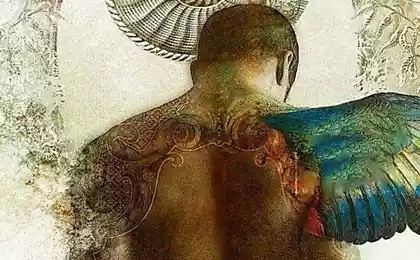321
How to blow your nose
What is a runny nose - is known to everyone, but not everyone knows the consequences of too vigorous attempt vysmorkatsya
your options: blow your nose or nose and swallow a draw. Unless you prefer to let the snot dripping from his nose, so that the upper lip glistened wet all the time. But you're not five years from now? It's time to learn how to get rid of mucus in an adult.

Before we begin, an explanation: laid noses actually rarely crowded with mucus. If due to colds, flu or allergies you feel that your nose is full, it is not laid out for mucus, and because of dilated blood vessels. Yes, your body is in such periods produces more mucus than normal. But bear in mind that "normal" nose produces an impressive amount of mucus (a day is approximately 600-700 mL), and with the volume of your body, usually cope without problems. A few extra milligrams of mucus should not cause disruptions in the drainage system of the nose, but it still can become clogged if the vessels in the nose expand and break mode of its operation.
The result: excessive mucus your body - it's not the biggest problem for normal breathing. But the strengthened blowing your nose and try to forcibly remove excess mucus from the nose does not clear your airways as you would like. In fact, it is likely that increased blowing your nose slow down the drainage. So, here are the best ways to get rid of mucus.
Blow your nose or smorkatsya
Let's go straight to the point. There are two major arguments against blowing your nose. Firstly, as a result of blowing your nose to the nasal cavity occurs much pressure. Secondly, the pressure can serve as a sort of "bow shutter", whereby a portion of slime would not fly outside, but on the contrary, is dropped inwards in the sinuses.
In 2009, researchers at the University of Virginia under the supervision of an expert on infectious diseases J. Owen Hendley tested these claims by measuring the intranasal pressure in subjects, in those moments when they are sneezing, coughing or blowing their noses. Researchers have also used a special colorant for the nasal cavity, entitled "iodinated contrast agent." The dye allowed the researchers to control the flow of mucus ejected from the sinuses of subjects during sneezing, coughing or blowing your nose.

Researchers have learned that while sneezing and coughing really increased intranasal pressure compared to normal breathing, but none of these processes does not increase the pressure as much as blowing your nose (and there is evidence that the pressure that occurs when blowing the nose, would be enough to cause a hemorrhagic stroke, but let's still going to worry about one issue at a time, right?). Meanwhile, the produced during blowing your nose and pressure enough to throw up to 1 ml mucus in the nasal sinus at each blowing the nose.
According to the researchers, it is unclear how much mucus may build up in the sinuses that way, but they suggest that because of this accumulation of the flow in the nose can change, and the process of drainage - significantly slow down. There is no consensus about whether this process is harmful, or just irritating, but experts point out that in the process of blowing your nose with mucus in the sinuses can get viruses, bacteria and inflammatory mediators. That in turn can turn your runny nose in a much more serious infection.

So what do the readers with a stuffy nose? According to Dr. Anil Kumar Lalwani from the Mayo Clinic, there are two preferred methods, with the two can be combined with nasal drops or special pills, can reduce the swelling in the nose (which, as you recall, is the root of all evil).
Method One: Blow your nose! But to do it very carefully. It is not necessary to press out all the cracks again. Instead, hold the right nostril and exhale through the left quietly. Now do the same with the other nostril. Well, it's not as satisfying as your usual deafening blowing your nose, but at least your sinuses will stay clean and you will be less likely shlopotat aneurysm. It's called compromise.
Method Two: sniff and swallow. And if it makes you disgusted - spits.
Clear? Or, gently blow your nose or sneeze at all. Either that or swallow. As a responsible adult.
via factroom.ru

your options: blow your nose or nose and swallow a draw. Unless you prefer to let the snot dripping from his nose, so that the upper lip glistened wet all the time. But you're not five years from now? It's time to learn how to get rid of mucus in an adult.

Before we begin, an explanation: laid noses actually rarely crowded with mucus. If due to colds, flu or allergies you feel that your nose is full, it is not laid out for mucus, and because of dilated blood vessels. Yes, your body is in such periods produces more mucus than normal. But bear in mind that "normal" nose produces an impressive amount of mucus (a day is approximately 600-700 mL), and with the volume of your body, usually cope without problems. A few extra milligrams of mucus should not cause disruptions in the drainage system of the nose, but it still can become clogged if the vessels in the nose expand and break mode of its operation.
The result: excessive mucus your body - it's not the biggest problem for normal breathing. But the strengthened blowing your nose and try to forcibly remove excess mucus from the nose does not clear your airways as you would like. In fact, it is likely that increased blowing your nose slow down the drainage. So, here are the best ways to get rid of mucus.
Blow your nose or smorkatsya

Let's go straight to the point. There are two major arguments against blowing your nose. Firstly, as a result of blowing your nose to the nasal cavity occurs much pressure. Secondly, the pressure can serve as a sort of "bow shutter", whereby a portion of slime would not fly outside, but on the contrary, is dropped inwards in the sinuses.
In 2009, researchers at the University of Virginia under the supervision of an expert on infectious diseases J. Owen Hendley tested these claims by measuring the intranasal pressure in subjects, in those moments when they are sneezing, coughing or blowing their noses. Researchers have also used a special colorant for the nasal cavity, entitled "iodinated contrast agent." The dye allowed the researchers to control the flow of mucus ejected from the sinuses of subjects during sneezing, coughing or blowing your nose.

Researchers have learned that while sneezing and coughing really increased intranasal pressure compared to normal breathing, but none of these processes does not increase the pressure as much as blowing your nose (and there is evidence that the pressure that occurs when blowing the nose, would be enough to cause a hemorrhagic stroke, but let's still going to worry about one issue at a time, right?). Meanwhile, the produced during blowing your nose and pressure enough to throw up to 1 ml mucus in the nasal sinus at each blowing the nose.
According to the researchers, it is unclear how much mucus may build up in the sinuses that way, but they suggest that because of this accumulation of the flow in the nose can change, and the process of drainage - significantly slow down. There is no consensus about whether this process is harmful, or just irritating, but experts point out that in the process of blowing your nose with mucus in the sinuses can get viruses, bacteria and inflammatory mediators. That in turn can turn your runny nose in a much more serious infection.

So what do the readers with a stuffy nose? According to Dr. Anil Kumar Lalwani from the Mayo Clinic, there are two preferred methods, with the two can be combined with nasal drops or special pills, can reduce the swelling in the nose (which, as you recall, is the root of all evil).
Method One: Blow your nose! But to do it very carefully. It is not necessary to press out all the cracks again. Instead, hold the right nostril and exhale through the left quietly. Now do the same with the other nostril. Well, it's not as satisfying as your usual deafening blowing your nose, but at least your sinuses will stay clean and you will be less likely shlopotat aneurysm. It's called compromise.
Method Two: sniff and swallow. And if it makes you disgusted - spits.
Clear? Or, gently blow your nose or sneeze at all. Either that or swallow. As a responsible adult.
via factroom.ru























